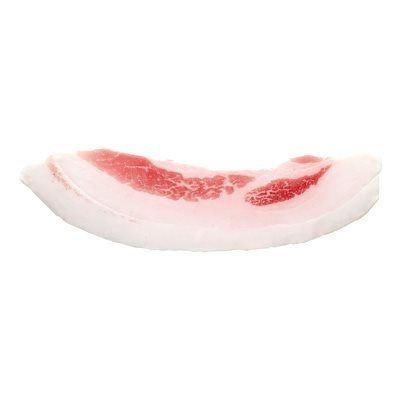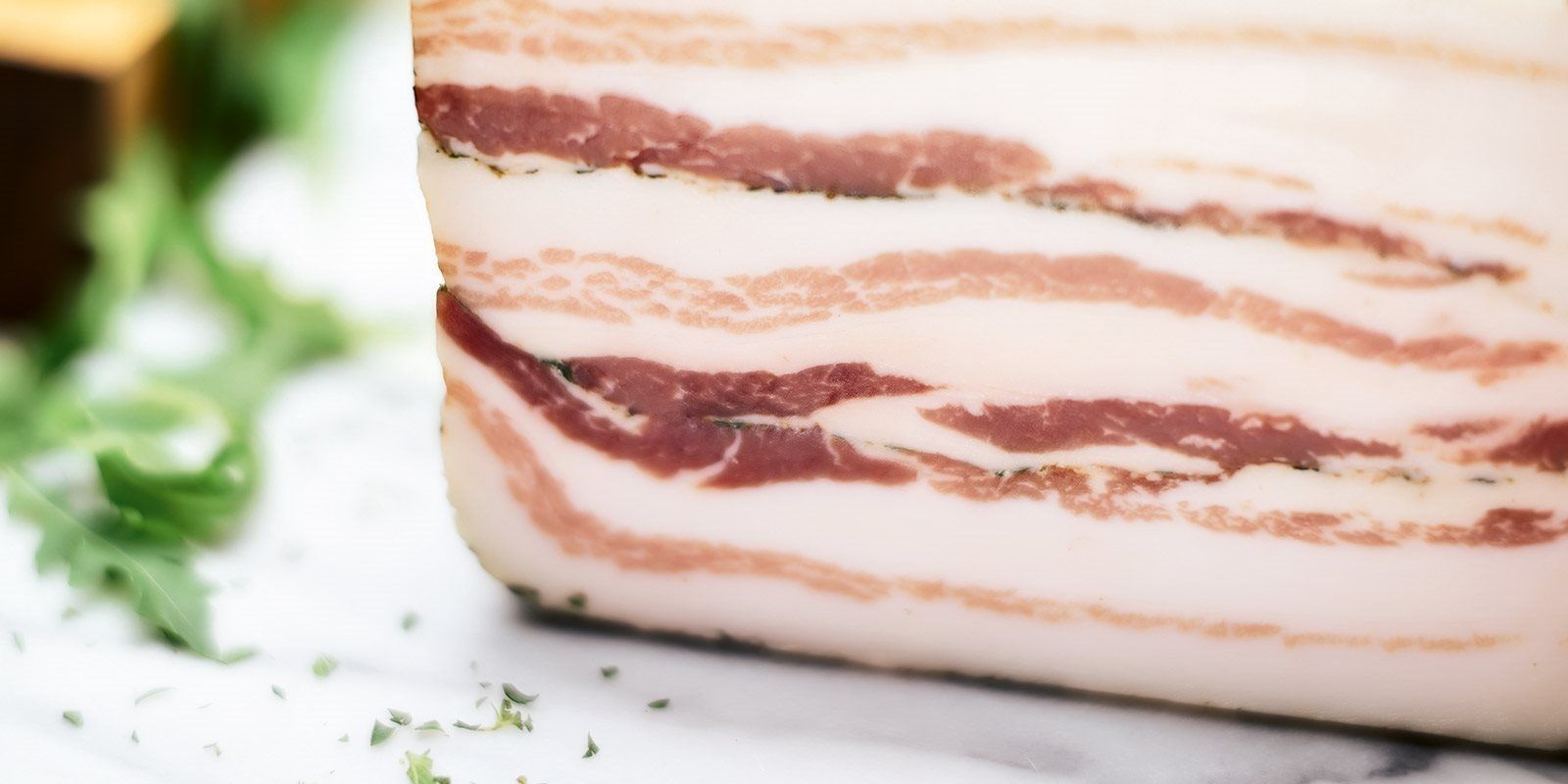



Simple and charming, with an embracing fragrance. Clean on the palate, with a balanced contrast of sweet fat and saltiness structured by seasoning.


The lard in human history has always been considered a precious and nutritious food, so much that in the 1800s it was also called the "food of the anarchists", since the refugees up in the mountains managed to survive thanks to this deli meat, which it gave so much energy and it could be preserved very long in salt.
Thick, compact, rindless lard which is delicious for the skilful salting and traditional maturation. The aroma is sweet and savoury, upon tasting its sweetness is released immediately, while the maturation enriches the persistence of the flavour. Overall it stands out for its clean and balanced aromas.
The lard must be cut into thin slices using either a slicer or a knife, especially if consumed as an appetizer. It is used to make a chopped mixture for culinary preparations.
Lukewarm slices of toasted bread, grilled polenta slices and delicious stuffed bread are prepared with the lard. Its taste loves sweet and sour combinations; a few drops of traditional balsamic vinegar, a few slices of green apple, raspberries, a green tomato jam or a teaspoon of chestnut honey. Excellent in soups and vegetable soups, irresistible in stews and beef stews, essential to wrap the prawn tails and flavour oven-roasted vegetables.
Lambrusco, with its persistent froth, vinous aroma, acid notes of red fruits, its freshness and its balance is one of the wines that can best accompany the round and soft taste of lard.